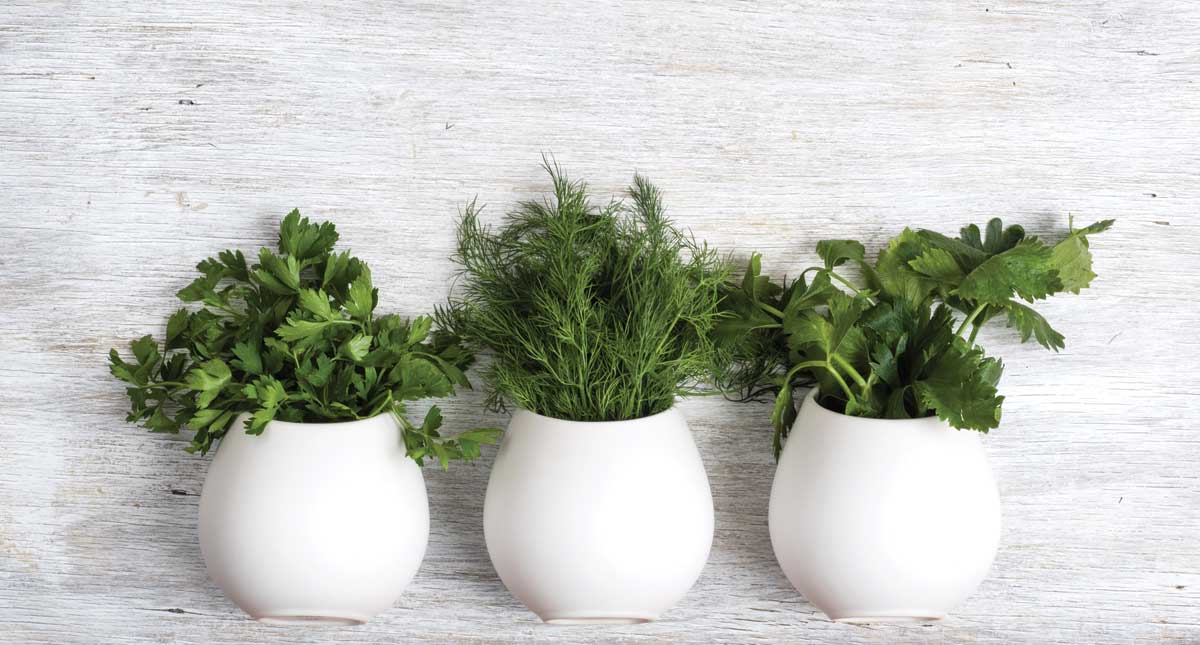What’s Your Style?
12 Jan 2015
Do you prefer quirky and colorful or sophisticated and neutral? Here’s a guide to help you define your design style.
By Annabel Buckley Illustrations by anna longridge Whenever interior design is discussed, you always hear how important it is to define your style. Often people are confused about what that exactly means, but it’s really very simple: It’s all about you, and what you like. The key to success is to feel confident about your choices and not compromise your style. The planning stage of your interior-design project is the right time to start thinking about your style. Once you’ve identified your particular style, the project will flow freely, making your decisions about furniture, soft furnishings and accessories so much easier. It’s worth mentioning that it’s OK to have different styles in different rooms. For example, I have a garden room that’s full of beautiful plants, an old water pump and a huge brick fireplace. When I decorated this room, I decided on a rustic style to complement these features. I found some old painted French cast-iron chairs, a pair of rattan armchairs and a large oak table. I softened this look by introducing color from plenty of tapestry cushions. In another part of the house, I have a formal sitting room that’s decorated in English Country style, which complements the furniture and the views from the windows. And of course, there are rooms in-between decorated in other styles. The continuity throughout the interior is kept by using the same color palette, albeit in different tones. This provides harmony, generating a link between the rooms despite their different styles. Whatever your style choice, be sure to enjoy the process of sourcing, choosing and playing with all the endless possibilities! Here are a few guidelines that loosely define some of today’s more popular interior styles. Styles can be interpreted in many different ways, but at least the descriptions below will give you some idea of their creative meaning. When researching your chosen style the best public places to seek ideas are museums, hotels, bars, restaurants and shops.Contemporary
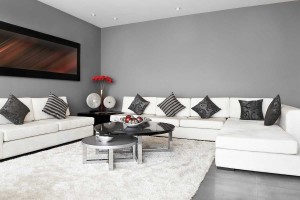 Fundamentally, the core to this style is simplicity, subtle sophistication with texture and clean lines. It represents an uncluttered look.
Typical colors involve a neutral palette of taupe, gray, toffee, sand, stone, black and whites, with jewel-colored accents.
Typical furniture features smooth, clean lines with curves, often using light--colored wood such as ash that demonstrates a quality of lightness and simplicity.
Fundamentally, the core to this style is simplicity, subtle sophistication with texture and clean lines. It represents an uncluttered look.
Typical colors involve a neutral palette of taupe, gray, toffee, sand, stone, black and whites, with jewel-colored accents.
Typical furniture features smooth, clean lines with curves, often using light--colored wood such as ash that demonstrates a quality of lightness and simplicity.
 Much of today’s modern contemporary furniture came from the design movement that started as early as 1902 and continued through to the 1980s. In this period, many key designers produced defining examples of modern furniture. The list below shows a few of the well-known designers who were instrumental in forging innovative designs that to this day are deeply respected and considered collectible items of this style. The core principles remain the same today, although there is a strong emphasis on environmentally friendly materials.
Much of today’s modern contemporary furniture came from the design movement that started as early as 1902 and continued through to the 1980s. In this period, many key designers produced defining examples of modern furniture. The list below shows a few of the well-known designers who were instrumental in forging innovative designs that to this day are deeply respected and considered collectible items of this style. The core principles remain the same today, although there is a strong emphasis on environmentally friendly materials.
- Marcel Breuer 1902-1981
- Ludwig Mies van der Rohe 1886-1969
- Eileen Gray 1878-1976
- Le Corbusier (born Charles Edouard Jenneret) 1887-1965
- Lilly Reich 1885-1947
- Walter Gropius 1883-1969
Bohemian
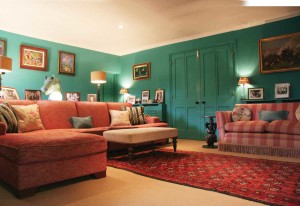
 In modern terms this style depicts an unconventional, usually artistic look incorporating plenty of color and pattern. Vanessa Bell, a well-known artist and interior designer who was part of the ‘Bloomsbury Group,’ along with her sister Virginia Woolf (the author) in the early 20th century, is a good example of this style. The original Bohemians were travelers from central Europe (hence, the French origin of the word bohémien, for ‘gypsy’).
Typical Bohemian colors are bright and playful.
Typical Bohemian furniture tends to be eclectic and is often painted.
In modern terms this style depicts an unconventional, usually artistic look incorporating plenty of color and pattern. Vanessa Bell, a well-known artist and interior designer who was part of the ‘Bloomsbury Group,’ along with her sister Virginia Woolf (the author) in the early 20th century, is a good example of this style. The original Bohemians were travelers from central Europe (hence, the French origin of the word bohémien, for ‘gypsy’).
Typical Bohemian colors are bright and playful.
Typical Bohemian furniture tends to be eclectic and is often painted.
 Eclectic
Eclectic
An eclectic style includes a mix of designs brought together from different sources, but that live together in harmony. This style doesn’t belong to any one source, and I think it’s probably the most popular look for today’s top-end global interiors.
 Because it’s a combination of styles, there are no signature colors or pieces of furniture that define this look. In some ways, this is a difficult look to achieve successfully because there are no defining rules. From experience, I would say that color, balance, symmetry and scale are important elements to bear in mind.
Because it’s a combination of styles, there are no signature colors or pieces of furniture that define this look. In some ways, this is a difficult look to achieve successfully because there are no defining rules. From experience, I would say that color, balance, symmetry and scale are important elements to bear in mind.
English Country
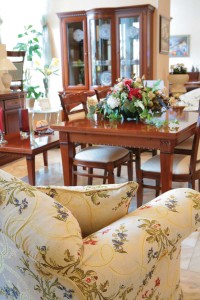 This style is a reflection of the English countryside, with soft-colored florals in natural fabrics like linen and glazed cottons, resulting in an understated comfort yet quietly sophisticated. This style has a traditional, timeless elegance.
This style is a reflection of the English countryside, with soft-colored florals in natural fabrics like linen and glazed cottons, resulting in an understated comfort yet quietly sophisticated. This style has a traditional, timeless elegance.
 Interior designers Sibyl Colefax and John Fowler epitomize this look. Their partnership began in 1938, but was cut short by World War II. After the war Nancy Lancaster took over the partnership with John Fowler and the two of them were a formidable pair, undertaking some impressive interiors.
Interior designer Jean Monro was to my mind masterful at creating what is quintessentially English Country style, and enjoyed using floral chintz fabrics to achieve this look successfully. Like Colefax and Fowler, Monro’s fabrics, which can be purchased today (www.jeanmonro.com), are truly glorious designs that epitomize English Country style.
Typical colors: Think of a beautiful traditional English garden, a mix of soft, pure colors with touches of deep tonal strength, but nothing too bright or lurid. Rose pinks, delphinium blues, leaf greens, lilacs, soft aquas and old-school blues with a bit of nut brown.
Typical furniture: English antiques, good quality, handsomely designed pieces.
Interior designers Sibyl Colefax and John Fowler epitomize this look. Their partnership began in 1938, but was cut short by World War II. After the war Nancy Lancaster took over the partnership with John Fowler and the two of them were a formidable pair, undertaking some impressive interiors.
Interior designer Jean Monro was to my mind masterful at creating what is quintessentially English Country style, and enjoyed using floral chintz fabrics to achieve this look successfully. Like Colefax and Fowler, Monro’s fabrics, which can be purchased today (www.jeanmonro.com), are truly glorious designs that epitomize English Country style.
Typical colors: Think of a beautiful traditional English garden, a mix of soft, pure colors with touches of deep tonal strength, but nothing too bright or lurid. Rose pinks, delphinium blues, leaf greens, lilacs, soft aquas and old-school blues with a bit of nut brown.
Typical furniture: English antiques, good quality, handsomely designed pieces.
Classical
 The key to this style is symmetry and balance. It’s primarily the principles and influences from ancient Greek and Roman times that define this style.
The key to this style is symmetry and balance. It’s primarily the principles and influences from ancient Greek and Roman times that define this style.
 Typical colors are yellow, blue, green and brown, with a hint of black. These are the traditional colors that stem from the Empire period. Also, softer hues such as terra-cotta, gray and pink are linked to this period.
Typical furniture can be any era, but has the ability to stand the test of time by its quality of pure elegance, with the ancient Greek or Roman principles at the root of the design.
Typical colors are yellow, blue, green and brown, with a hint of black. These are the traditional colors that stem from the Empire period. Also, softer hues such as terra-cotta, gray and pink are linked to this period.
Typical furniture can be any era, but has the ability to stand the test of time by its quality of pure elegance, with the ancient Greek or Roman principles at the root of the design.
Rustic

 This is an unsophisticated simple style with its roots firmly planted in nature. Materials such as wood, stone, terra-cotta and cast iron are in keeping with this look. A feel of nature is also behind this style.
Typical colors: Soft natural shades—soft greens, grays, browns, warm whites and hints of blue.
Typical furniture: Strong, solid pieces made from natural materials like wood, metal or stone, unrefined, almost raw, naturalistic pieces with character. Upholstery materials can include leather, linen, wool or cotton.
This is an unsophisticated simple style with its roots firmly planted in nature. Materials such as wood, stone, terra-cotta and cast iron are in keeping with this look. A feel of nature is also behind this style.
Typical colors: Soft natural shades—soft greens, grays, browns, warm whites and hints of blue.
Typical furniture: Strong, solid pieces made from natural materials like wood, metal or stone, unrefined, almost raw, naturalistic pieces with character. Upholstery materials can include leather, linen, wool or cotton.
Shabby Chic
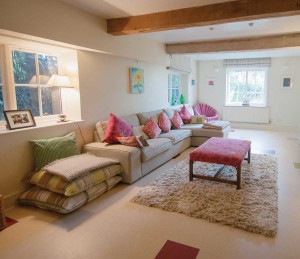 The World of Interiors magazine famously used the phrase “shabby chic” in the 1980s, which launched it as a definite style. What typifies this style is a gentle decay of decorating, distressed paintwork, and faded patterns on linen and cotton fabrics, no obvious signs of newness.
The World of Interiors magazine famously used the phrase “shabby chic” in the 1980s, which launched it as a definite style. What typifies this style is a gentle decay of decorating, distressed paintwork, and faded patterns on linen and cotton fabrics, no obvious signs of newness.
 Typical colors include plenty of warm whites, soft neutral tones along with a pastel palette of blues, pinks and sandy colors.
Typical furniture could be painted with a distressed look with inspiration from 18th-century Sweden, France and even American Shakers.
Typical colors include plenty of warm whites, soft neutral tones along with a pastel palette of blues, pinks and sandy colors.
Typical furniture could be painted with a distressed look with inspiration from 18th-century Sweden, France and even American Shakers.
Vintage
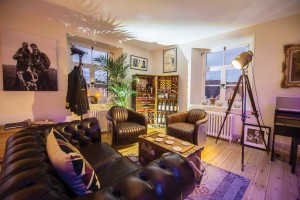 This style is all about nostalgia. It’s effectively good quality from the past. Using the best of the best, but with sentimentality attached.
This style is all about nostalgia. It’s effectively good quality from the past. Using the best of the best, but with sentimentality attached.
 Typical colors are patriotic colors, which signify this look, as do colors from the 1940s and ’50s, like light green, mauve, white and sunshine yellow, which work well with this style. Wallpaper depicting patterns and designs from certain eras instantly gets the nostalgia senses working. There’s definitely some quirkiness in this style. Cath Kidston is a present-day designer who has successfully brought back vintage style with a modern-day twist.
Typical furniture: Sideboards, cabinets and display units, or pieces that hold strong sentimental connections with the past.
Typical colors are patriotic colors, which signify this look, as do colors from the 1940s and ’50s, like light green, mauve, white and sunshine yellow, which work well with this style. Wallpaper depicting patterns and designs from certain eras instantly gets the nostalgia senses working. There’s definitely some quirkiness in this style. Cath Kidston is a present-day designer who has successfully brought back vintage style with a modern-day twist.
Typical furniture: Sideboards, cabinets and display units, or pieces that hold strong sentimental connections with the past.
Annabel Buckley studied at London’s Inchbald School of Design and has been an interior designer for 30 years. Her book, Design It Yourself Interiors: A Step by Step Practical Guide to Interior Design, is available at www.amazon.com.


